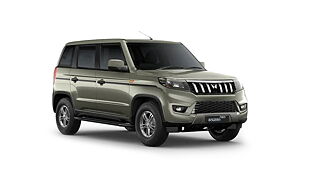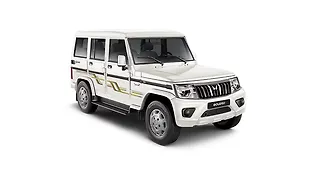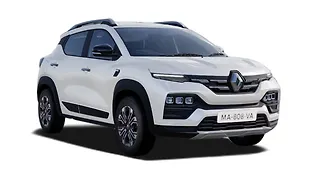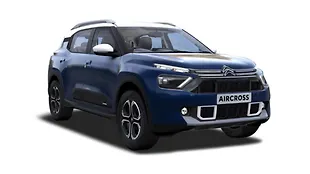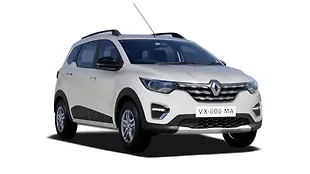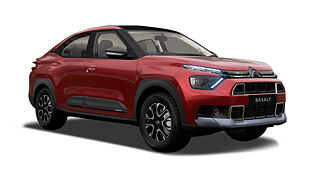Mahindra NuvoSport N8 AMT
- NuvoSport
- Specs & Features
- Variants
- Colours
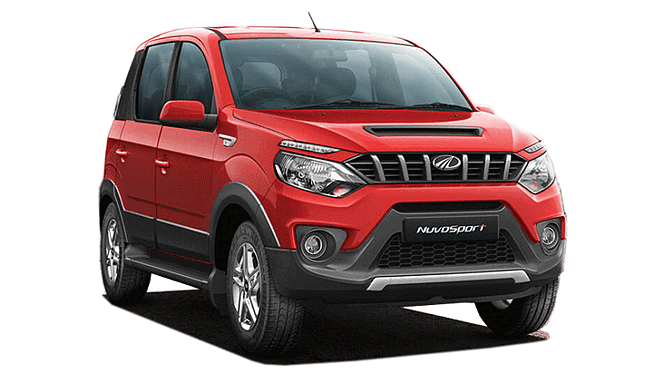
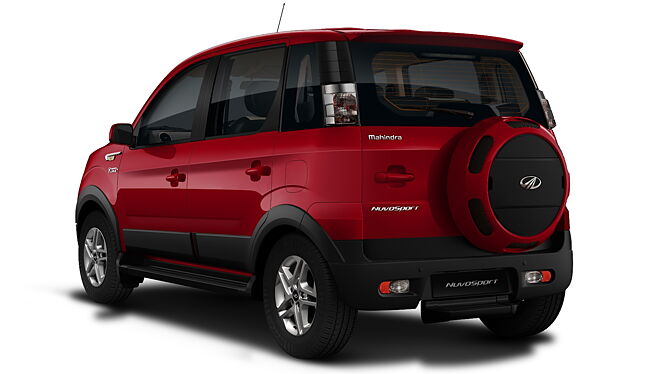
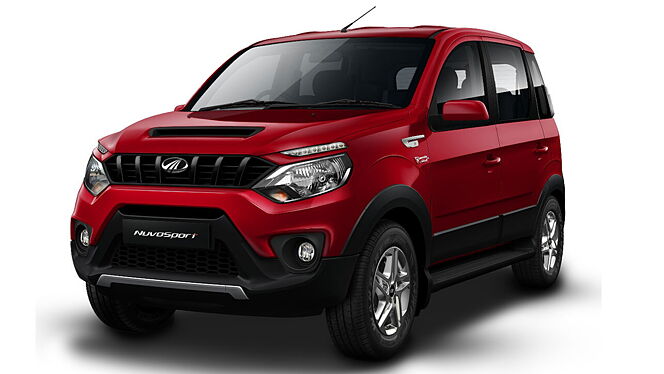

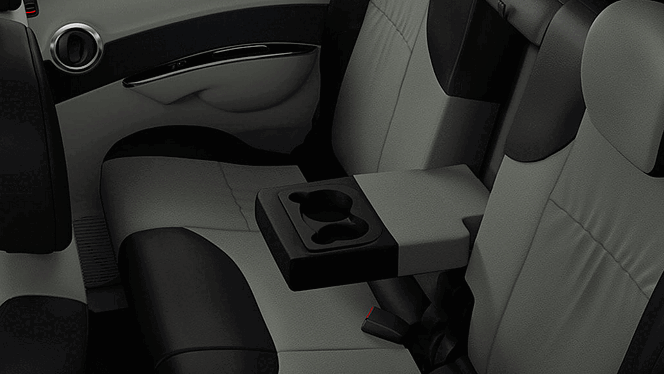

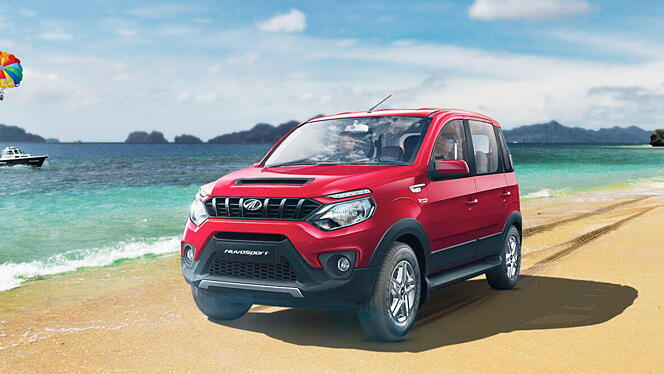
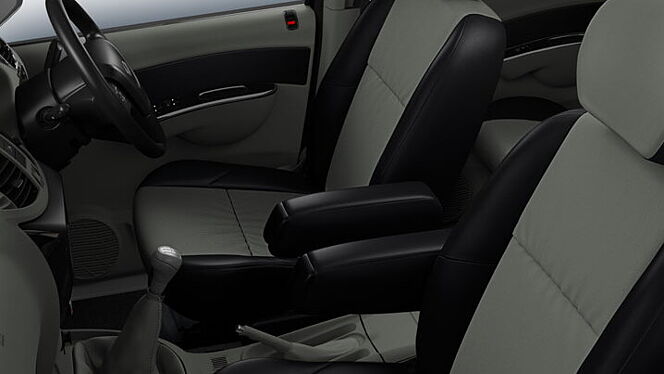
Variant
Mahindra NuvoSport N8 AMT Review
Mahindra reckoned that its Quanto needed a new dose of life and in the process performed a nose job on the existing design before christening it the ‘NuvoSport’. In this episode, we review Mahindra’s five-speed AMT version and highlight the obvious dump of the clutch pedal. Here’s the gist.
What is it?

Mahindra reckoned that its Quanto needed a new dose of life and in the process performed a nose job on the existing design before christening it the ‘NuvoSport’. You don’t need to stare at this iteration to arrive at the conclusion that it looks butch and impressive. However, as much as it looks stunning from the front, it looks quite the opposite from the rear. And that’s mainly because Mahindra designers stuck with the Quanto’s rear end bringing only minimal changes. In this episode, we review Mahindra’s five-speed AMT version; the carmaker’s serious attempt to steal your attention from the obvious dump of the clutch pedal. Here’s the gist.

How is it on the inside?

As the NuvoSport serves as a replacement for the Quanto, you get the same interior dimensions and layout which is quite spacious. While huge glass panes all around account for great visibility, you also get the same dash design and finish. The quality levels of the plastic on the dash and other parts of the cabin remain the same as the Quanto and leaves a lot to be desired. Nevertheless, the dual colours splashed around does liven up the interiors to an extent. Though the centre air vents offer appropriate cooling even on a hot summer day, the design is an eyesore. All switchgear feel positive to operate and are easy to access, but every now and then you tend to miss the presence of a door lock-unlock button.

You literally have to clamber onto the NuvoSport, thanks to the height, which is when you miss the A-pillar handle that would have been a nice addition. Once in, you’re perched high and there’s a commanding view of what lies ahead. The front seats have appropriate back support and can hold large frames with reasonable comfort. Plus there’s enough legroom and headroom for you to stretch out too. However, keep an eye out on the plastic edges of the arm rest as they have a tendency to scratch you at times. That said, you will also have to keep yanking the arm rest out of the way for access to the seat belt buckles. Move on to the middle row and these seats can be reclined for comfort too. They offer the same amount of support and legroom, and three people can sit abreast reasonably. When the side facing third row jump seats are folded, the boot space breaks free by up to 412 litres and can swallow another 850 litres if the middle row is tumbled.

Mahindra’s NuvoSport AMT is sold through two versions, namely N6 and N8. To give you an idea, the N8 adds DRLs, alloys, spoiler, side body decal, blacked out B and C pillar and a leatherette over the N6 variant. You also get aluminium pedals, scuff plates, a 6.2 inch touchscreen infotainment system and reverse park assist. Add to this the steering mounted controls, driver seat height adjust, lumbar support, second row tumble seats, front arm rest and fog lamps. All that for Rs 77,000 more.

How does it drive?

The AMT version of the NuvoSport has specs that are identical to the manual version but it does away with the Power/Eco mode. So you get the 1.5-litre mHawk diesel motor that does 100bhp at 3750rpm, and 240Nm of torque between 1600rpm and 2800rpm. A five-speed AMT box takes care of transmission duties. Once you’re ready to get on the move, your hands naturally go for the gear shift and that’s when you realise that the lever is a tad too small. It also feels farther from the driver than it should. But you forget all this when you start analysing the uniquely designed ‘+’ shaped transmission gate. A few trials on how to get each mode actuated and a quick spin is all it takes for you to understand the shift layout.

As you slot into auto mode and back off the brake pedal, you’re greeted by a hesitance to crawl. This is much more pronounced while reversing and will call for some getting used to in ‘stop-go’ driving, especially on inclined surfaces. On the go, it is difficult not to notice the extra refinement compared to the Quanto. However, the shifts are slow and the AMT pause is even more pronounced when compared to any other AMT gearbox in general. The drive feels flat after 3500rpm and there is no grunt from the engine after that. It makes more sense to drive the NuvoSport AMT sedately as there’s loads of torque below 2000rpm.

To give you an impression of how this AMT manages its job, here’s the breakup. In ‘Auto’ mode and sedate acceleration, all the gears shift at 2100rpm, however, floor the pedal and the transmission shifts between 3500-4500rpm to keep you in the midst of the power band. Nevertheless, it needs to be noted that the AMTs 0-100kmph sprint is way slower than the manual, by 4.44sec! What makes matters worse is that the AMT and manual have recorded similar in-gear accelerations for the 20-80kmph and 40-100kmph runs. It kills the whole idea as automatics are supposed to post quicker times by using the kickdown feature. Mahindra refused to divulge the weight of the NuvoSport, and when we weighed it, it touched the scales at around 1.7 tonnes. We believe that this is one of the reasons which dampen the overall performance of the car.

Slot into the ‘Manual’ mode and the system lets you shift as you please. Nevertheless, all gears automatically shift around the 4500rpm mark. On the whole, the AMT really suffices as a decent city dweller and makes for an option for those buyers who want to avoid the rubbery long throw gearshift that’s on the manual version.
We noticed that the steering is a tad too big but you get over this shortcoming eventually. Also, the NuvoSport feels best when driven over smooth surfaces. Anything less, like a patched or broken surface at any speed and you’ll be confronted with a lot of sideways movement that disrupts passenger comfort. However, there’s no stress about hitting any road as the NuvoSport makes zilch suspension racket. Despite the harshness of any terrain, it feels rugged and built to last. Though braking is adequate for most situations, up the pace and you will be left wanting more feedback from the pedal.

Should I buy one?

Mahindra’s NuvoSport AMT is built to gratify a set of urban SUV consumers who need the convenience an automatic can bring to their city runabout. It makes more sense than the manual version as the price difference only ranges from Rs 55,000 to Rs 65,000, and the fuel efficiency figures should not differ as much either. But the highlight is that you will need to live with the dwarfed performance figures vis-a-vis the manual model. What you do get though, in addition to the inherent left foot freedom, are qualities like a refined engine, decent service backup and a rugged SUV that offers class-leading cabin space.

Where does it fit in?

As of now, Mahindra’s NuvoSport AMT has no competition in its segment. Mahindra has positioned this vehicle clearly above its stable mate, the TUV300, by up to Rs 23,000. While the N6 AMT retails for Rs 9.10 lakh (ex-showroom Delhi), the N8 AMT costs Rs 9.87 lakh (ex-showroom Delhi).
Pictures by Kapil Angane
Click here for the Nuvosport M/T First drive
Click here for the Nuvosport M/T comparison test
Click here for the Nuvosport spec comparison
Specifications & Features
- Specifications
- Features
- Specifications
- Features
Specifications
Engine & Transmission
- Engine1493 cc, 3 Cylinders Inline, 4 Valves/Cylinder, DOHC
Timely services will keep a motor efficient and in top shape.
- Engine TypemHAWK100
The official title given by the manufacturer in terms of the name of the engine, the displacement and the number of cylinders.
A bigger displacement and more than four-cylinders generally indicate a performance-oriented engine.
- Fuel TypeDiesel
All cars in India either run on petrol, diesel, CNG, LPG or electric power.
- Max Power (bhp@rpm)100 bhp @ 3750 rpm
Gives a good idea of the performance of the vehicle under full thrust. A higher figure here usually means a higher top speed as well.
Higher the power, the peppier the engine but it can also affect fuel economy.
- Max Torque (Nm@rpm)240 Nm @ 1600 rpm
Relates to in-gear acceleration. A higher figure here means better roll-on acceleration, fewer gear shifts, and possibly better fuel efficiency.
The more torque at low RPM range makes the engine feel more responsive. It also allows the engine to run smoothly without too many gear changes.
- Mileage (ARAI)17.4 kmpl
This is the maximum fuel efficiency that an engine gives. All numbers are provided by the manufacturer based on tests conducted and specified by the standards of the ARAI (Automotive Research Association of India)
Such fuel efficiency attained while driving in special conditions makes it unlikely to get it in real-world conditions
- DrivetrainRWD
Cars come with different drivetrain configurations depending on the segment.
Front-wheel drive (FWD) is most common in mainstream cars while expensive cars or SUVs come with rear-wheel drive (RWD) or all-wheel drive (AWD).
- TransmissionAMT - 5 Gears, Manual Override
Type of transmission used to transfer power from the engine to the wheels
A manually operated transmission is the most popular type, thanks to its simplicity and low cost. Varied types of automatic transmissions are also available.
- Turbocharger / SuperchargerTurbocharged
Manufacturers today offer turbochargers to boost engine power without affecting its fuel economy. Superchargers are found in more expensive cars but on the downside, they are not very efficient.
Turbochargers are more effective but require plenty of heat management. Superchargers, meanwhile, offer linear bump in power but they are comparatively more complex.
- Valve/Cylinder (Configuration)4, DOHC
Dimensions & Weight
- Length3985 mm
The length of the car decides its segment. In India, cars that are less than 4 metres in length enjoy reduced excise duties.
- Length: 3985
Longer length results in more cabin space. It also adds to straight line stability.
- Width1850 mm
A car's width is defined as its widest point without its mirrors.
- Width: 1850
Although more width gives you more lateral space inside the cabin, it makes the car more difficult to park in narrow spots.
- Height1870 mm
The height of the car denotes the highest point of the vehicle from the ground.
- Height: 1870
Taller the car, the more headroom there is on offer inside the cabin. However, a tall boy stance also affect the car’s centre of gravity which can cause more body roll.
- Wheelbase2760 mm
The space between the center of the front and rear wheels.
- Wheelbase: 2760
The longer the wheelbase, the more space there is inside the cabin.
- Ground Clearance180 mm
It’s the space between the lowest point of the car and the ground.
- Ground Clearance: 180
If the car has a good amount of clearance, it’s easier for it to clear big speed breakers and overall, deal with bad roads.
Capacity
- Doors5 Doors
The number of doors define the category of car. For example – four door means sedan, two-door means coupe while five-doors usually refer to a hatchback, MPV or an SUV.
- Doors: 5
- Seating Capacity7 Person
The number of people that can be seated comfortably in the car, which has also been mandated by the car manufacturer.
- Seating Capacity: 7
- No of Rows3 Rows
Smaller cars usually have two rows which can seat five, but some SUVs and MPVs have three rows and can seat around 7-8 passengers.
- Bootspace412 litres
Boot space defines how practical the car is with respect to how much luggage it can carry.
- Bootspace: 412
A boot with a large and wide opening is ideal for loading heavy items. Additionally, a lower loading height also makes it easy to put in luggage.
- Fuel Tank Capacity60 litres
The official volume of the fuel tank of a car, usually denoted in litres.
If a car has a large fuel tank, it can cover long distances without refuelling.
Suspensions, Brakes, Steering & Tyres
- Front SuspensionIndependent Double Wishbone type, Coil springs with Anti-roll bar
Almost all cars in India use an independent front suspension which is usually the MacPherson Strut type.
- Rear SuspensionNon Independent , Coil springs
The rear suspension can either be non-independent or independent.
Most of the budget cars have non-independent suspension while the more expensive ones get independent rear suspension which offers better bump absorption.
- Front Brake TypeDisc
Most of the vehicles sold in India get ventilated or non-ventilated disc brakes upfront.
- The ventilated discs are more popular thanks to them providing better stopping power and it also works well in hot conditions.
- Rear Brake TypeDrum
In affordable cars, drums brakes are fitted at the rear as they are cost effective.
Disc setup at the rear is now getting more popular as cars are getting faster in the real world.
- Minimum Turning Radius5.5 metres
The official kerb-to-kerb minimum radius a car takes to complete a 180-degree turn.
Shorter the turning radius, the lesser space you need to make a tight turn or to take a U-turn.
- Steering TypePower assisted (Hydraulic)
Almost all steering systems in cars today have an assist to help park them better at low speeds - these can be hydraulic, electro-hydraulic or electric.
- WheelsAlloy Wheels
The wheels used on cars are either steel rims with plastic wheel cover hub or alloy wheels on higher spec models or expensive cars.
Razor cut, or diamond cut alloy wheel design are not getting more popular. Manufacturers usually offer these in top-end trim of their car models.
- Spare WheelSteel
Important in a country with varying quality of roads, spare wheels ensure one doesn’t get stranded when one of the main tyres gets damaged.
Select premium car models feature space savers (smaller than the stock wheels) to save on boot space.
- Front Tyres215 / 65 R16
The profile/dimension of rubber tyre that fits on the front wheels.
- Rear Tyres215 / 65 R16
The profile/dimension of rubber tyre that fits on the rear wheels.
Features
Exterior
- Sunroof / MoonroofNo
Ensure the sunroof is closed before exiting the vehicle to prevent dirt/rain from entering the cabin
- Roof-mounted AntennaYes
The compactness of the roof-mounted antenna prevents its damage in certain situations
- Body-coloured BumpersYes
Having parking sensors will save your bumper paint if it brushes by obstacles
- Chrome Finish Exhaust PipeNo
- Body KitNo
Functional or purely aesthetic parts added to the car's body such as side skirts and roof/bonnet scoops
- Rub-stripsBlack
A strip of rubber fitted to the sides of the car's doors or bumpers to prevent dents and dings
Opt for quality strips because the cheaper ones tend to come off too soon/look shabby.
Braking & Traction
- Anti-Lock Braking System (ABS)Yes
An electronic system that prevents the tyres from locking and skidding in emergency braking situations by pulsing the brakes (quickly releasing and reapplying the brakes)
ABS is a great accident prevention technology, allowing drivers to steer while braking hard
- Electronic Brake-force Distribution (EBD)Yes
An electronic system that redirects braking forces among the four brakes to stop the car as quickly and stably as possible
- Brake Assist (BA)No
A system that increases brake pressure to help the car stop quicker
Even when emergency braking, it is observed that drivers don’t apply maximum brake pressure through the pedal, the BA system provides additional pressure to help stop the car quicker
- Electronic Stability Program (ESP)No
System designed to improve car stability and control, especially when the car is accelerating.
ESP or ESC cannot increase traction but rather improve control or help regain control in slippery conditions.
- Four-Wheel-DriveNo
A system that sends the car's power to all the four wheels at the same time
- Hill Hold ControlNo
A feature that prevents the car from rolling backwards when stopped on a slope
- Traction Control System (TC/TCS)No
This system cuts power to those wheels that are spinning without grip/traction
Given the option, keep traction control on all the time.
- Hill Descent ControlNo
A feature that limits the car's speed without any driver input while traversing down descents
- Limited Slip Differential (LSD)No
This function prevents wheelspin and maximises traction by shuffling torque between wheels
It is also a nifty safety feature since it offers more control over a vehicle's power delivery
- Differential LockNo
Locking differentials split power/torque evenly among both tyres on an axle.
In off-road vehicles, locking differentials allows for better traction when one of the wheels is in the air, in FWD/AWD cars allows for better corner traction and in RWD sports cars allows for drifting around corners.
Safety
- Overspeed Warning-
Mandatory safety system for cars sold in India, a single beep is emitted after 80kmph and continuous ones after 120kmph
- Lane Departure Warning-
This function detects when the car is drifting out of its lane and cautions the driver through audio/visual alerts
- NCAP Rating-
The official crash test safety rating given to a car by one of the many testing agencies around the world
- Airbags-
- Rear Middle Three Point seatbeltNo
Safer three-point seatbelts for passengers seated in the middle of the second row of seats.
Budget cars are usually fitted with more economical lap belts for the middle-occupant.
- Rear Middle Head RestNo
A headrest for the middle occupant of the second-row of seats.
Budget cars are usually not offered with headrests for the middle occupant of the second-row to save on costs. Headrests are instrumental in reducing whiplash injuries in case of an accident
- Tyre Pressure Monitoring System (TPMS)No
A digital gauge that provides the live status of the air pressure in every tyre of a car.
For accurate readings, ensure that the sensors on the rim are not tampered with during any wheel/tyre repairs
- Child Seat Anchor PointsNo
Anchor points or strap systems built into car seats to keep child seats in place, especially during a crash
ISOFIX is an international standard for child seat anchor points, but not all car manufacturers follow this standard
- Seat Belt WarningYes
Mandatory fitment in cars sold in India, emits loud beeps when it detects that occupants are not wearing their seatbelts.
Seat belt warning is mandatory for front-seat occupants, but it is recommended that all occupants wear seat belts.
Comfort & Convenience
- Air Purifier-
Used to improve the air quality within the cabin by removing contaminants
- Air ConditionerYes (Manual)
The different types of air-conditioning systems used to cool the cabin
Maintaining the lowest temperature and first blower speed offers the best results.
- Front AC-
- Rear AC-
- Third Row AC Zone-
- HeaterYes
This feature allows warm air to pass through the air-con vents for heating the cabin
- Vanity Mirrors on Sun VisorsDriver & Co-Driver
Compact mirrors fitted to the inside of the sunvisor
- Cabin Boot AccessYes
The option of being able to access the boot space while sitting inside the car
- Anti-glare MirrorsManual - Internal Only
These mirrors negate the glare from headlight beams of cars behind you
Since a large chunk of people love driving around in their high beam, these mirrors come in handy
- Parking AssistNo
A feature that aids drivers park with ease and greater precision using sensors/cameras
It comes as a boon for drivers who are not used to parking in tight spots
- Cruise ControlYes
A system that automatically controls the speed of the car
- Headlight and Ignition On ReminderNo
An alert that warns one from leaving the car with the headlight and ignition switched on
- Keyless Start/ Button StartNo
When fitted, this system allows the car to be switched on without removing the key from the driver’s pocket or vicinity.
Keyless entry and start/stop (KESS) systems in some cars also include operation via a smartphone.
- Steering AdjustmentTilt
A function where the steering wheel moves up/down, in/out as per the driver's requirement
When both rake and reach adjustments are incorporated, it makes for a tailormade driving position
- 12V Power Outlets2
This socket provides current to a cigarette lighter style 12 volt plug
It helps charge smartphones, tablets, laptops, rechargeable batteries and other USB chargers. It also powers a compressor that inflates tyres and the humble cigarette lighter!
Lighting
- HeadlightsHalogen
- Automatic HeadlampsNo
Such headlights automatically switch on and off when they sense bright or dark driving conditions
Keeping them switched on at all times gives the user the best results
- Follow Me Home HeadlampsYes
The headlamps remain lit for sometime when the car is locked/unlocked to aid user visibility in dark surroundings
- Cornering HeadlightsNo
These lights turn left and right based on steering inputs to illuminate the sides of the car
- TaillightsHalogen
Inspect tail lamp bulbs at periodic intervals for optimum safety.
- Daytime Running LightsHalogen
Lights that automatically switch on during the day for increased visibility
- Fog LightsHalogen on front
A type of lamp that improves driver visibility while driving through fog
The yellow/amber fog lights are preferable as they are warm to the eyes and do not reflect from the fog.
- Puddle Lamps-
Incorporated into the bottom section of a car's door mirrors, they light up the ground underneath the front door when the door is unlocked
- Cabin LampsFront and Rear
- Light on Vanity MirrorsNo
A lamp that's located around the vanity mirror behind the sun visor
- Rear Reading LampYes
- Glovebox LampNo
- Headlight Height AdjusterYes
Allows adjustment to the height of the headlight beams via a switch on the dashboard
Locks & Security
- Engine ImmobiliserYes
A security device that prevents the engine from being started unless the key is present
- Central LockingRemote
This feature let's one unlock all the doors remotely or with a key
- Speed Sensing Door LockYes
This feature automatically locks the car's doors when it reaches a preset speed
A convenient feature for those who can't remember to lock the doors
- Child Safety LockYes
Such locks are built into the rear doors to prevent rear seat occupants from opening the doors
Doors, Windows, Mirrors & Wipers
- ORVM ColourBody Coloured
Mirrors that are placed on the car's exterior, around the door, to aid the driver see behind the vehicle
Placing/sticking wide-angle mirrors on the ORVMs can enhance the rear view tremendously.
- Scuff Plates-
This is fitted where the door meets the frame to protect it from scratches and dust
Not using scuff plates may result in the door sill giving away prematurely.
- Power WindowsFront & Rear
When the car's windows can be raised/lowered by pressing a button/switch
In emergencies where the power window electronics have jammed, exit the vehicle by kicking out the windscreen
- One Touch DownDriver
This feature allows a user to roll down the windows with a single press of a button
This feature reduces the time your hand is away from the steering wheel
- One Touch UpDriver
This feature allows a user to roll up the windows with a single press of a button
This feature reduces the time your hand is away from the steering wheel
- Adjustable ORVMsElectrically Adjustable
Different ways of adjusting the door mirror to suit the driver's requirement
Tremendously aids driving judgement in a variety of tight situations.
- Turn Indicators on ORVMsNo
Turn indicators are fitted to the door mirrors for improved visibility
- Rear DefoggerYes
A feature that removes condensed water droplets from the rear windscreen to improve visibility
Turning air recirculation off helps gain faster results.
- Rear WiperYes
Although a seemingly minuscule feature, it negates the hatchback's/SUV's inherent ability to retain dirt/water on the rear windscreen.
- Exterior Door HandlesBody Coloured
- Rain-sensing WipersNo
When the system detects water droplets on the windshield, it activates the wipers to improve driver visibility
This feature can be intrusive especially while you are negotiating a tricky bend at a higher speed
- Interior Door HandlesChrome
- Door PocketsFront
- Side Window BlindsNo
These protective shields keep the sun's rays from affecting the occupants
With restrictions on darker sun films, these blinds are a huge relief on sunny days.
- Bootlid OpenerKey
The various methods of opening the boot lid
- Rear Windshield BlindNo
A manually/electrically operated, usually translucent, screen designed to reduce the sunlight filtering into the cabin through the rear windshield to improve rear-cabin comfort and privacy
Entertainment, Information & Communication
- Android Auto-
An Android feature that allows car infotainment displays to mirror parts of the phone screen to ease touch operations while driving.
- Apple CarPlay-
An Apple (iOS) feature that allows car infotainment displays to mirror parts of the iPhone screen to ease touch operations while driving.
This function bumps up the safety quotient since the use of a smartphone while driving can be hazardous
- DisplayTouch-screen Display
A touchscreen or display that acts as a user's interface to the various functions of the car
- Touchscreen Size-
- Integrated (in-dash) Music SystemYes
The music player that comes factory fitted
- Speakers4
Number of speaker units as part of a car’s surround-sound system
- Steering-mounted controlsYes
The widely-used controls are placed on the steering wheel to ease driver usage
- Voice CommandNo
When the car's system responds to the occupant's voice to perform certain features
- GPS Navigation SystemNo
A system that uses satellite signals to help the driver with directions to reach a destination
- Bluetooth CompatibilityPhone & Audio Streaming
Allows devices with bluetooth functionality connect wirelessly to the car's infotainment system
Using Bluetooth functionality offers a cable-free experience
- AUX CompatibilityYes
The car's music player can play tracks off a portable device via an aux cable
Bluetooth can make AUX cables look ancient, but unlike the former, there's hardly any loss in sound quality
- AM/FM RadioYes
Is the music system's capability of playing broadcasted radio channels
If radio signals are weak, one can stream music
- USB CompatibilityYes
When tracks can be played from a USB/pen drive
- Head Unit Size2 Din
The size of the music system fitted to a car. Traditionally 1-DIN or 2-DIN, are being replaced by touchscreen units of varying sizes.
- iPod CompatibilityYes
- DVD PlaybackNo
The capability of the infotainment system to play DVDs
Storage
- Cup HoldersFront & Rear
- Driver Armrest StorageYes
The storage space within the armrest that's located between the front passengers
- Cooled GloveboxNo
A feature where cool air from the air-conditioner is diverted to the glovebox
- Sunglass HolderYes
- Third Row Cup HoldersNo
Seats & Upholstery
- Driver Seat Adjustment-
- Front Passenger Seat Adjustment-
- Rear Row Seat Adjustment-
Rear seat adjustments make for an enlarged luggage space when there's lots of baggage to haul.
- Third Row Seat Adjustment-
In addition to aiding passenger comfort, these also boost the practicality that arises from extended boot space
- Seat UpholsteryLeatherette
When it's time to replace, use a fabric that grips and are inherently cool to the touch
- Leather-wrapped Steering WheelNo
Leather not only grips your palms well, but it also offers a premium feel
- Leather-wrapped Gear KnobNo
- Driver ArmrestYes
The armrest located between the front passengers which helps comfort the driver's arm while driving
- Rear Passenger Seat TypeBench
- Third Row Seat TypeJump Seats
This row could either be a bench or a pair of jump/captain seats
When the need arises, the last row can double up as space for luggage.
- InteriorsDual Tone
Depicts if the cabin comes with a single or dual-tone colour scheme
- Interior ColoursBlack & Grey
The various color shades used within the cabin
- Rear ArmrestYes
- Folding Rear SeatFull
Some rear seats have the option to be be folded to offer more practicality
- Split Rear Seat60:40 split
Sections of the rear seat are capable of being folded down separately
This function bumps up practicality as the boot space increases when required.
- Split Third Row Seat50:50 split
Sections of the third-row seat are capable of being folded down separately
- Front Seatback PocketsYes
The pockets behind the front seats which help rear seat occupants store their stuff
- HeadrestsFront & Rear
The portion extending from or fixed to the seat that supports the head
Instrumentation
- Instantaneous ConsumptionYes
It indicates how much fuel is being used that very instant your car is moving
- Instrument ClusterAnalogue
A screen situated mostly behind the steering wheel displaying information and warning lights regarding the car's various vitals
- Trip MeterMulti-Function Display
- Average Fuel ConsumptionYes
The amount of fuel consumed by the engine (kmpl) is displayed on the instrument cluster in real time
A glance will help you maintain better fuel efficiency and save money
- Average SpeedNo
The total distance traveled divided by the time taken to cover that distance
The higher the average speed, the quicker you were on that journey/trip
- Distance to EmptyYes
The approximate distance a car will run with the amount of fuel remaining in the tank
- ClockDigital
- Low Fuel Level WarningYes
This alert should be taken as a final warning to head straight to the fuel pump
- Door Ajar WarningYes
A warning light that pops up on the instrument cluster when the doors are not shut properly
- Adjustable Cluster BrightnessYes
The brightness of the instrument cluster can be adjusted via controls
It comes in handy to improve instrumentation visibility between day and night by toggling brightness.
- Gear IndicatorYes
It notifies the driver about which gear the car is being driven in and can also suggest down- or upshifting to improve efficiency
- Shift IndicatorYes
Notifies the driver about the optimum instances to shift gears
It comes in handy to derive the best fuel efficiency and engine component longevity
- Heads Up Display (HUD)No
This function allows specific data like 'speed' to reflect/project on the windscreen in the driver's line-of-sight
- TachometerAnalogue
An instrument that measures engine speed in revolutions-per-minute (rpm)
Ideally, the tachometer helps a driver know when to shift gears in a manual gearbox.
Manufacturer Warranty
- Battery Warranty (In Years)-
The number of years the EV battery is covered under the manufacturer's warranty
More the years, the better
- Battery Warranty (In Kilometres)-
The number of kilometres the EV battery is covered under the manufacturer's warranty
More the kilometres, the better
- Warranty (In Years)3
The automaker can void the vehicle's warranty if the owner has fitted aftermarket components.
- Warranty (In Kilometres)100000
The automaker can void the vehicle's warranty if the owner has fitted aftermarket components.
Other NuvoSport Variants
| Variants | Price | Specifications | |
|---|---|---|---|
Rs. 10.49 Lakh | 7 Person, RWD, 240 Nm, 180 mm, 412 litres, 5 Gears, mHAWK100, No, 60 litres, Front & Rear, 3985 mm, 1850 mm, 1870 mm, 2760 mm, 240 Nm @ 1600 rpm, 100 bhp @ 3750 rpm, Remote, Yes (Manual), Front & Rear, 1, No, No, Yes, No, Yes, 0, 5 Doors, 17.4 kmpl, Diesel, Automatic (AMT), 100 bhp | Get Offers from Dealers |
Similar Cars
